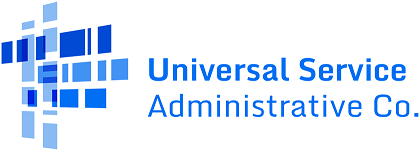CAF Phase II Model
Connect America Fund (CAF) Phase II Model, commonly called “CAF II Model,” provided set monthly payments based on a forward-looking cost model to “price cap carriers” to build broadband service with speeds of at least 10 megabits per second downstream and one megabit per second upstream (10/1 Mbps) to a specific number of fixed locations in areas eligible for funding. The CAF Phase II Model support term initially ran from 2015 to 2020, and all participating carriers then elected an optional seventh year of support for 2021. CAF II Model carriers had until the end of 2021 to complete deployment and were required to meet interim deployment milestones. Learn more.
Deployment Requirements
Carriers that received CAF II Model funding were required to offer at least one commercial voice service and one commercial broadband service with at least 10/1 Mbps speeds and to complete:
- 40 percent of deployments by the end of year 3 (2017)
- 60 percent of deployments by the end of year 4 (2018)
- 80 percent of deployments by the end of year 5 (2019)
- 100 percent of deployments by the end of year 6 (2020)
Annual Filing Requirements
Carriers receiving CAF Phase II support were required to comply with the following filing and certification requirements annually:
- March 1: Submit and certify geolocated broadband deployment data showing where the carrier built out broadband by latitude and longitude in the previous calendar year (and complete separate deployment milestone certifications), or certify that the carrier has “no locations to upload.” Submit Locations in the HUBB. USAC conducts verification reviews to confirm deployment to a random sample of locations reported in the HUBB following each deployment milestone. Carriers must notify the FCC and USAC, and relevant state, U.S. Territory or Tribal governments if applicable, within 10 business days after the applicable deadline if they have failed to meet a build-out milestone (see 47 CFR Section 54.320(d)).
- July 1: Submit speed and latency test data from performance measures testing conducted in the previous calendar year at a random sample of locations reported in the HUBB that have active subscribers. (USAC encourages carriers to file and certify test results on a quarterly basis after each quarter’s testing is complete.) Submit speed and latency test data in the Performance Measures Module.
- July 1: Certify financial and operational data collected by FCC Form 481.
- October 1: Certify that the carrier is eligible to receive High Cost support and used all support received in the proceeding calendar year only to provide, maintain and upgrade the facilities for which the support was intended and will do the same in the coming calendar year. State utility commissions certify carriers under their jurisdiction as eligible telecommunications carriers (ETCs). Carriers not subject to state jurisdiction self-certify. Learn more about the annual ETC certification.
Related Orders
USF/ICC Transformation Order (FCC 11-161) – Order implementing CACM
FCC Executive Summary – Summary of the USF/Transformation Order
April 2014 Connect America Order (FCC 14-54) – Continued the implementation of the landmark reforms to modernize universal service for the 21st century
Connect America Phase II Model Order (FCC 14-190) – Finalized the decisions necessary to proceed with the offer of support to price cap carriers
Attachment C – State, County and Carrier Data on $9 Billion, Six-Year Connect America Fund Phase II Support for Rural Broadband Expansion
CAF Phase II Accepted Areas Map – Identifies the areas where some of the nation’s largest phone companies, also known as price cap carriers, accepted Phase II support
ACS Order (FCC 16-143) – Order adopting tailored service obligations for Alaska Communications Systems (ACS)
